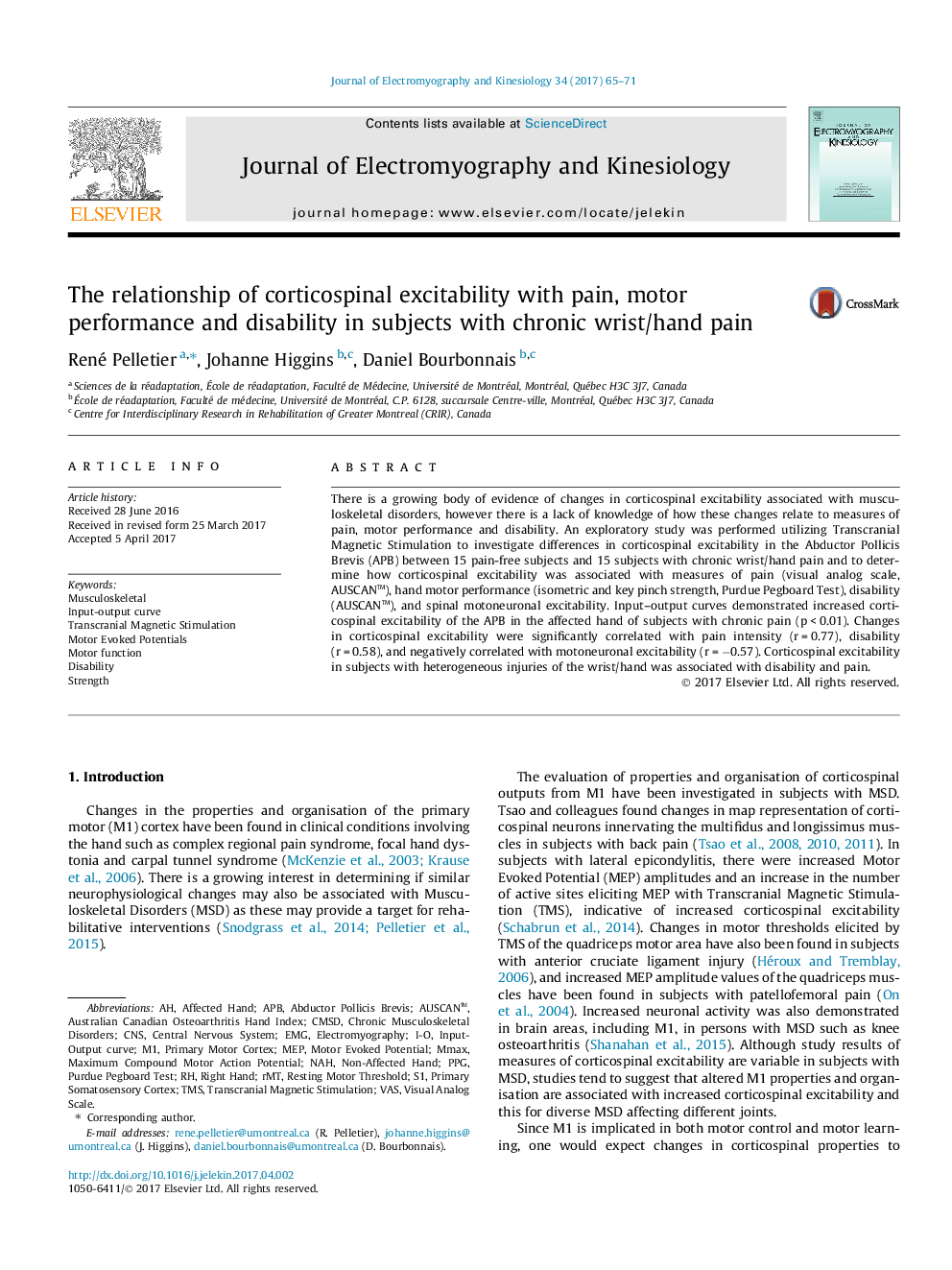| Article ID | Journal | Published Year | Pages | File Type |
|---|---|---|---|---|
| 5709553 | Journal of Electromyography and Kinesiology | 2017 | 7 Pages |
Abstract
There is a growing body of evidence of changes in corticospinal excitability associated with musculoskeletal disorders, however there is a lack of knowledge of how these changes relate to measures of pain, motor performance and disability. An exploratory study was performed utilizing Transcranial Magnetic Stimulation to investigate differences in corticospinal excitability in the Abductor Pollicis Brevis (APB) between 15 pain-free subjects and 15 subjects with chronic wrist/hand pain and to determine how corticospinal excitability was associated with measures of pain (visual analog scale, AUSCANâ¢), hand motor performance (isometric and key pinch strength, Purdue Pegboard Test), disability (AUSCANâ¢), and spinal motoneuronal excitability. Input-output curves demonstrated increased corticospinal excitability of the APB in the affected hand of subjects with chronic pain (p < 0.01). Changes in corticospinal excitability were significantly correlated with pain intensity (r = 0.77), disability (r = 0.58), and negatively correlated with motoneuronal excitability (r = â0.57). Corticospinal excitability in subjects with heterogeneous injuries of the wrist/hand was associated with disability and pain.
Keywords
I-OTMSMEPPurdue Pegboard TestMmaxPPGAPBVASRMTabductor pollicis brevisStrengthresting motor thresholdMusculoskeletalelectromyographyEMGTranscranial magnetic stimulationCNScentral nervous systemMotor functionprimary somatosensory cortexprimary motor cortexDisabilityvisual analog scaleMotor evoked potentialMotor evoked potentialsNAH
Related Topics
Health Sciences
Medicine and Dentistry
Orthopedics, Sports Medicine and Rehabilitation
Authors
René Pelletier, Johanne Higgins, Daniel Bourbonnais,
